| Sweet Poison
The social highlight of the crime fiction month of July was undoubtedly the first What’s Your Poison? Crime Evening held in Heffers Bookshop (formerly St Ignatius College) on a sultry evening in Cambridge.
Victualed by Pimms and strawberries and cream, crime fiction fans were let loose on more than a dozen invited crime writers, armed with an examination paper of fiendishly difficult questions set by the former Dean of St Ignatius, Richard Reynolds. The idea was for the readers to complete the exam (and win prizes) by quizzing the writers on-duty, as all the answers related to their books – if only they could remember them! (Naturally, the writers there did not participate as it would have meant admitting their ignorance to other writers!).
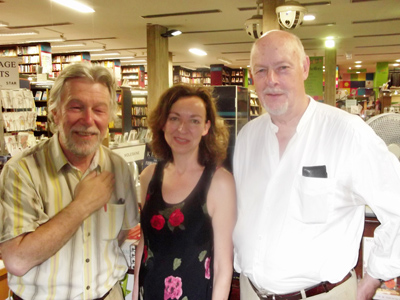
For the dedicated reader, this was an excellent way of meeting both old favourites and new writers they may be tempted to try. Certainly many books were sold and particularly in demand were East Anglia’s own Jim Kelly, CWA Chairman Alison Joseph and Diamond Dagger winner John Harvey.
Well Spotted
As everyone knows, this column is well-regarded the world over for its scrupulous accuracy, so it is with deep regret that I have to report a mistake.
I recall that when my old friend Rick Blaine decided to move to Casablanca and open a café, I asked him why he had chosen that exotic Moroccan city. He replied he had gone there ‘for the waters’ and my response was an incredulous ‘But it’s in the middle of a desert!’ Rick’s reply was a weary ‘I was misinformed’.
Eagle-eyed readers in the colonies across the Atlantic have pointed out that I too must have been misinformed in last month’s column when I eagerly anticipated a “new” David Downing thriller called The Red Eagles. It appears that The Red Eagles is not exactly “new” as it was first published in America more than a quarter of a century ago in 1987.
I often wonder what became of my chum Rick. I lost touch with him after some unpleasantness at Casablanca airport one night whilst waiting for a night flight to Lisbon. I did try and warn him not to fly Ryanair…
Clap of the Gun
‘And the clap of the gun was heard…’ was how the incident was reported by a contemporary; the incident itself being the first (reported) murder in England by means of a hand gun. The year was 1536 and the victim was a prominent London merchant and Member of Parliament, Robert Packington. His killer was never found.
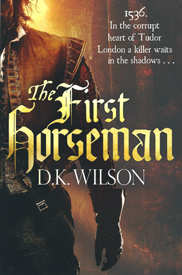
Now prolific popular historian Derek Wilson has taken this true crime as the starting point for a new series featuring Thomas Treviot, a young goldsmith in Tudor London as his sleuthing hero, in The First Horseman, published by Sphere later this month.
Not A Load of Bull
The much-praised debut thriller set in the Ozarks by American Laura McHugh, The Weight of Blood, published here last month, was the first time I really noticed the famous bull logo of publisher Hutchinson in its new incarnation.
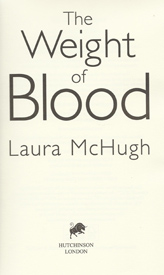

For many years of course, the company has used a stylised letter ‘H’ as its logo but personally I am delighted to see the bull back, although a much more modern, artier version than the one which adorns my first edition of Freddy Forsyth’s The Odessa File.
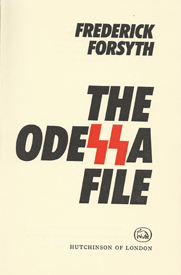 
That fierce and proud bull design brings back happy memories of book hunting in 1972 when the new hardback of Forsyth’s second thriller cost the magnificent sum of exactly £2. I am reliably informed that had it been signed by the author and I had encased it in protective plastic 40 years ago, it might now be worth considerably more than that.
Broadening the Mind
Like travel, crime fiction broadens the mind, comes cheaper and without the need for sun-block or (usually) painful vaccinations. Among this month’s releases, which could just as easily be found ina travel agent’s as a bookshop, are novels set in the exotic and humid East and the chillier climes of Finland.
White Crocodile, from Faber, is the debut novel of K.T. Medina and centres on human trafficking in Cambodia, where the author – a former troop commander in the Royal Engineers – herself worked with mine-clearing charities in Battambang.
 Next door to Cambodia (so to speak) is Thailand, where the prolific writer and cartoonist Colin Cotterill lives and works. For legal reasons I was unaware of Colin Cotterill’s crime fiction until receiving The Axe Factor, now out in paperback from Quercus, which is I believe the third adventure for crime reporter Jim Juree and her eccentric (that’s putting it mildly) family, whose back story is revealed in a very funny email to Clint Eastwood! Next door to Cambodia (so to speak) is Thailand, where the prolific writer and cartoonist Colin Cotterill lives and works. For legal reasons I was unaware of Colin Cotterill’s crime fiction until receiving The Axe Factor, now out in paperback from Quercus, which is I believe the third adventure for crime reporter Jim Juree and her eccentric (that’s putting it mildly) family, whose back story is revealed in a very funny email to Clint Eastwood!
From the spicy East, it is only a flick of the page and we are in ‘the Manchester of the North’ – the actual nickname of Tampere in Finland, which lies to the north-west (as all Manchesters should) of the capital Helsinki. Tampere is the home of author Salla Simukka and also the setting for her novel As Red As Blood from publisher Hot Key Books.
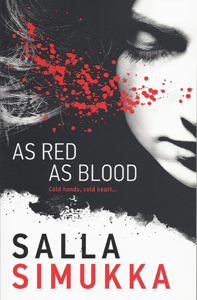
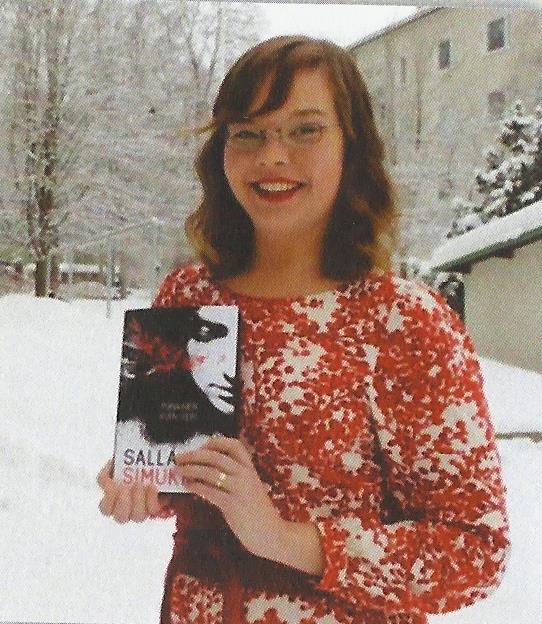
Hot Key is a new imprint to me and the back cover of As Red As Blood contains an instant “What’s in it?” colour-coded key to guide the reader, rather like the ‘traffic lights’ system on processed foods. In this case, the key shows that the contents fall (roughly): 40% “chilling”, 30% “murder”, 20% “blood” and 10% “snow”. That sounds to me to be a pretty good mathematical model for most Scandinavian crime fiction.
If, however, my British readers opt for a ‘staycation’ as I believe the current phrase is, and are looking for crime fiction set on home territory, there is plenty around.
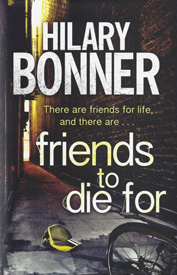 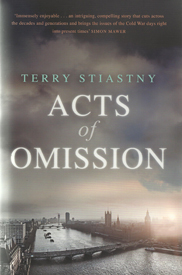
Hilary Bonner’s Friends to Die For, from Pan this month, is a bit of a departure in that she has abandoned her native West Country and taken as her setting the wild and dangerous landscape of London’s Covent Garden. And let’s face it, a fog-bound Dartmoor complete with snarling hounds has got nothing on Floral Street after the pubs have chucked out.)
For what I am told is ‘a virtuoso recreation of late-Nineties Britain’ I am recommended to try Acts of Omission by former BBC news reporter Terry Stiastny, out now from John Murray. The plot revolves around a computer disk containing a list of names of British informants to the Stasi – the secret police of the former East Germany – which has gone missing after a young intelligence officer has lost his computer. I am told that Terry Stiastny based this, her debut novel, on a true story she heard in Berlin around 1998. I can assure her it was probably true as one was always finding MI5 laptops casually left in wine bars, at kebab stands and on late-night tube trains in those happier, carefree days.
Off the Shelf
I have been meaning to read The Hiding Place by Robert Shaw for several years now, ever since I picked up a second-hand copy at a Salvation Army fire sale.
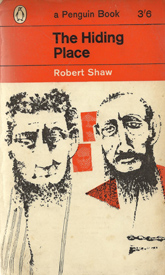
It is not a crime novel in the traditional sense, though the name of the author should be well enough known to fans of thrillers and adventure yarns on the big screen, for it is indeed the Robert Shaw who starred in From Russia With Love, The Sting, the good version of The Taking of Pelham 123 and perhaps most famously as the doomed shark hunter Quint in Jaws.
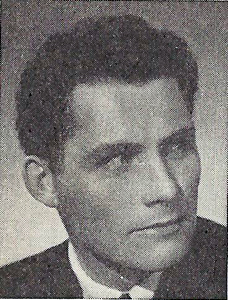 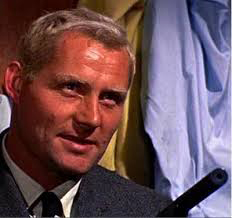 
The Hiding Place – a Kafka-esque story of two shot-down RAF flyers kept prisoner by a dotty jailer in a cellar in Bonn long after the war has ended – was, I think, Shaw’s first novel, published in 1959. By then (aged 32) he was already an accomplished stage actor having worked at Stratford and at the Old Vic, had written a play, starred in the TV series The Buccaneers and appeared in numerous films including The Dam Busters. Four more novels were to follow in the 1960s, one of them, The Man In The Glass Booth, he adapted as a successful but controversial West End stage play.
It wasn’t until I had finally read The Hiding Place that I learned it had been turned into a film comedy - Situation Hopeless, But Not Serious - in 1965 starring Alec Guinness as the loopy German jailer and the two British airmen being transposed into Americans, played by Mike Connors and Robert Redford. I have no idea if Robert Shaw approved of the film adaptation or even saw it as by then he was busy taking Hollywood by storm.
South of the Border
Any aspiring crime writer, or student of crime writing, in need of a lesson (or refresher course) in modern noir fiction could do no better than invest in a copy of Missing by Sam Hawken, published in September by Serpent’s Tail.
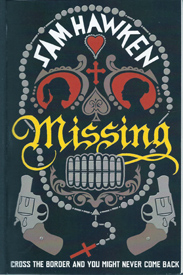
It begins quietly enough, perhaps a shade too quietly, telling the story of middle-aged widower Jack Searle, a ‘contractor’ (we would say ‘jobbing builder’) in the US border town of Laredo, who is trying to make an honest living and bring up two teenage step-daughters. Hawken quickly shows us that however hum-drum life in Laredo is, it’s infinitely preferable to life in Nuevo Laredo just across the border in Mexico, where rival drug cartels control everything, which means everything is out of control. He also drops clues that Searle may not be the straightforward honest Joe we thought he was. For one thing he seems un-naturally wary when it comes to alcohol and then, after about a hundred pages, it is let slip that he served in the US Marines. We are not, then, totally surprised that he has a handgun stashed away for when things turn ugly, as you knew they always would.
When his daughter and her Mexican cousin go missing after a night out in Nuevo Laredo, Searle fears the worst – and is quite right to do so. With the Municipal Police powerless (literally) and the town put under military law, though really still controlled by the drug gangs, a frustrated Searle teams up with the one honest but suspended cop he has found south of the border and sets out to find if not the missing girls, then some form of justice, and if not that, then old-fashioned bloody revenge.
This is a classic noir tale where bad things happen to people who don’t deserve them and even worse things happen to people who do and you know from the off that this is not going to be a story with a happy ending. I doubt, however, that too many readers will see coming just how bleak the ending will be. This is strong meat and not to everyone’s taste, but undeniably powerful in the writing and tinged with sadness for the war zone modern Mexico finds itself in.
If half of what Hawken suggests is true – and he assures us in an afterword that it is – we should all shed a tear for Mexico.
Christmas Spirit
No, it is not too early to be thinking of Christmas; not, that is, if you are a fan –and millions are – of that abrasive, self-willed and strident (her words) character Agatha Raisin as created by the prolific Marion Beaton, who is (according to her publisher) “the Queen of the Village Green mystery” which is a sub-genre I had not come across before.
Agatha Raisin and the Blood of an Englishman is published by Constable in October and must be Marion Beaton’s one hundredth novel – or thereabouts – under a variety of pen-names. It is said to be the 25th or 27th Agatha Raisin novel (depending on who you believe) – but who really cares? As the title gives it away, it is set around a local production of a Christmas pantomime.
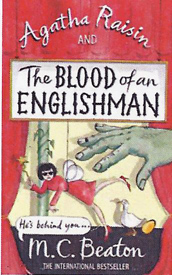
I am told thatwhen the hardback book appears it will also contain an extra treat for fans in the shape of a seasonal short story entitled Christmas Crumble.
And speaking of hard-working female Scottish crime writers, Marion McChesney (a.k.a. M.C. Beaton), was born in Glasgow, as was Caro Ramsay whose new book The Night Hunter is published this month by Severn House.
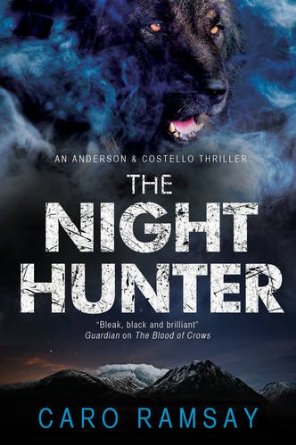
This is, I believe, the fifth novel to feature Caro’s police detective duo Anderson and Costello and all the questions you everwanted to ask about writing fictional detective series, or indeed about Scottish crime writing in general, will probably be answered at this year’s Bloody Scotland Festival to be held in Stirling from the 19th to 21st September.
Caro Ramsay will certainly be there, featuring in two separate sessions, one with Alex Gray and one with the prolific Quintin Jardine.
|
|
Die, and see Naples
One of the most entrancing series of crime novels to tempt my jaded palate in recent months has been the ‘Commissario Ricciardi’ mysteries set in Naples in the early 1930s, by Italian crime writer Maurizio De Giovanni.
Like all good fictional cops, Ricciardi has a side-kick – Brigadier Raffaele Maione – and naturally it’s a case of opposites attracting. One is handsomely slim, rich, introverted and has at least two female stalkers as well as a dark secret (a bit of a psychic he can hear the dying words of murder victims), the other is a jovial family man who loves his food – and has a dark secret (his policeman son has been killed in the line of duty and the wrong man sent to prison for the murder). Both are honest cops; which makes life difficult given that the cases which they investigate are enmeshed in layers of social division between the very rich and the very poor, the power and influence of the Catholic church and political infighting between the ruling Fascist party, its various militias and the dreaded OVRA, Mussolini’s secret police.

By My Hand is the fifth in the series, the books usually being subtitled to a particular season such as ‘The Summer (or Autumn) of Comissario Ricciardi’, this one being ‘The Christmas of…’ and I know there are dedicated readers out there who cannot contemplate anything other than reading a series in sequence. For those dedicated, if slightly blinkered, fans I suppose I should recommend I Will Have Vengeance – ‘the Winter of Comissario Ricciardi’ and then they can work their way through Springtime, Summer and Autumn before reaching ‘Christmas’ and By My Hand, which is published this month by Europa Editions.
But really, these books are so well written (and seamlessly translated) that no compulsive-obsessive behaviour is necessary. They can be read out of order without any serious health hazard – I started with #3 and look at me… – and although there is still one I haven’t read, I am already looking forward to the next, Viper, which I believe is due out in the UK in March next year.
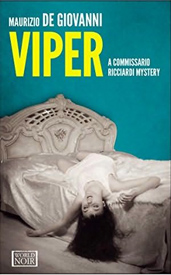
In the Nursery
According to my rather splendid set of Penguin Crime Top Trumps cards which Penguin kindly supplied to acquaint me with their 2014 crime fiction output, author M. J. Arlidge’s debut novel Eeny Meeny came out in May and had a ‘body count’ of 10.

I have no idea what the body count in his second novel is (although early rumours suggest it concerns several murdered men having their hearts removed, so it might involve Aztecs) but fans of his first will not have long to find out as Penguin publish Pop Goes The Weasel in September after a breathing space of only four months. It should not, of course, be confused with the book by another prolific writer, James Patterson, whose Alex Cross novel of the same title was a big hit back in 1999.
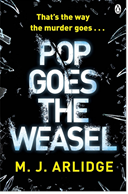 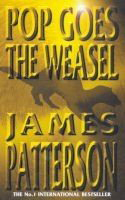
Mistress of the Art of Mystery
One of the happiest, an most cherished, images in the extensive photographic archive held here at Ripster Hall is this informal portrait of three of my favourite writers of historical mysteries – Ariana Franklin, Deryn Lake and Paul Doherty – caught sharing a joke (probably in medieval Latin) in our favourite Chinese restaurant in 2007.
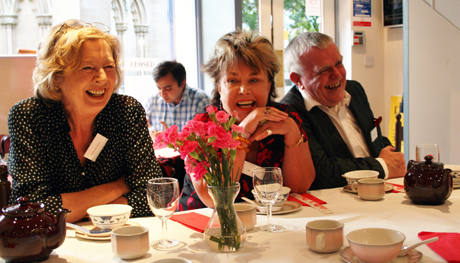
Sadly, my great friend Ariana is no longer with us, having passed away in 2011, but her last book is going to be, thanks to her daughter Samantha.
Winter Siege, to be published in October by Bantam, is the stand-alone historical thriller left unfinished on her untimely death and now completed by Samantha Norman, daughter of Barry and Diana (aka Ariana) Norman and is set in 1141 at the time when Stephen and Matilda were tearing England apart to secure the crown following the death of Henry I.
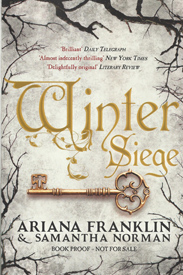
The historical setting is slightly earlier than in Ariana’s award-winning series of mysteries featuring Adelia Aguilar (that fabulous “Mistress of the Art of Death” character), which took place during the reign of Henry II – in fact many have rated Diana’s portrayal of Henry II in her Adelia books as among the best fictional studies of an English monarch. Which isn’t really surprising as Diana was something of an authority on Henry II and also Thomas à Becket (though she had little sympathy for him).
Having the privilege on an advance copy, I am delighted that the opening sections of Winter Siege take place in the Cambridgeshire fens, an area which always attracted Diana and was the reason, I am sure, why she was so generous in her praise of my novel The Legend of Hereward. But then Diana was a warm and generous person with hardly a bad word to say about anyone except Thomas à Becket – oh, and Raymond Chandler, who, as a very young cub reporter in Fleet Street, she interviewed shortly before his death in 1959.
Top Stuff Down Under
Those of you paying attention last month will have noticed the brief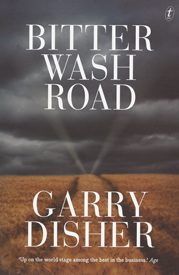 mention I was able to give to the new crime novel Bitter Wash Road by Australian author Garry Disher. I fear I was far too brief and really rather economical with my praise, for this really is a good book and goes down as one of my finds of the year; so I have reverted to my old profession of reviewer (possibly the third oldest profession in the world) and committed my thoughts to the Review section of this esteemed organ. mention I was able to give to the new crime novel Bitter Wash Road by Australian author Garry Disher. I fear I was far too brief and really rather economical with my praise, for this really is a good book and goes down as one of my finds of the year; so I have reverted to my old profession of reviewer (possibly the third oldest profession in the world) and committed my thoughts to the Review section of this esteemed organ.
As the crime fiction critic for the Sunday then Daily Telegraph from 1989 to 2000, and then the Birmingham Post from 2000 to 2008, Ireviewed 972 titles. (I know it’s sad, but I counted them.) Since I decided that going to publishers’ parties and gossiping about crime fiction was a better use of my few remaining years, I have not kept track of my (far less frequent) reviews done on the jolly old interweb, but if they are included then the total must certainly be 1000 by now. Perhaps Bitter Wash Road was my 1000th, who knows? If that is worth a prize, it could not go to a better book.
Kinky Boots and Bowler Hats
I realise that to most of my younger readers any mention of ‘The Avengers’ immediately conjures up images of super heroes in spangled costumes fighting to save New York from alien invasion. For the more mature reader, it brings back fond memories of the British spy-fi television series which ran from 1961 to 1969 and even fonder memories of leather-clad female stars Honour Blackman (Mrs Cathy Gale – and later, Pussy Galore in Goldfinger) and Diana Rigg (Mrs Emma Peel – and later, Dame and National Treasure).
In France I believe the show was called Kinky (or Leather) Boots and Bowler Hats, which is the title chosen by Michael Richardson for his ‘unofficial and unauthorised guide to The Avengers’ recently published by those dynamic people at Telos Publishing.
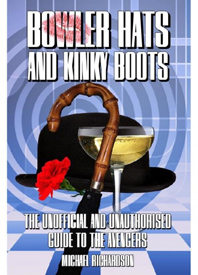
Early reviews from die-hard fans of the series have already praised this book as the definitive guide and it comes with a Forward from the legendary screenwriter and television producer Brian Clemens.
As a youthful fan of the smart, surreal and often very funny show (as well as of Mrs Peel), I was surprised, nay shocked, to learn that many of the episodes were censored in the USA – or shown late at night because of its ‘violence and adult content.’

I can’t possibly see why the Americans got upset about it. I mean, we British are supposed to be the uptight ones, aren’t we?
Those go-ahead young terriers at Telos Publishing are also to be applauded (at least by me) for their splendid new editions of Lights, Camera, Angel and Angel Underground this month.
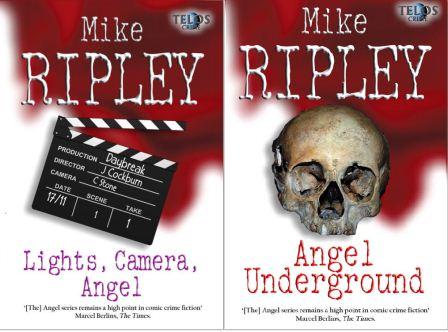
Telos have been reintroducing my ‘Angel’ books (and as eBooks) to an unsuspecting world for eight years now and I am delighted with the job they have done on twelve titles (so far). It means that for the first time in several years, all 15 Angel novels are theoretically back in print, despite the best efforts of certain publishers.
Eastern Approaches
Three years ago I speculated that Caroline (‘Midsomer Murders’) Graham and I could well be the last two surviving members of the East Anglian chapter of the Crime Writers Association assuming, falsely, that the local organization had been moribund for many years, or at least since the death of its leading light, Alan (‘Inspector George Gently’) Hunter in 2005.
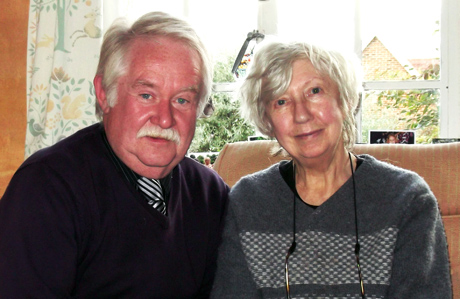 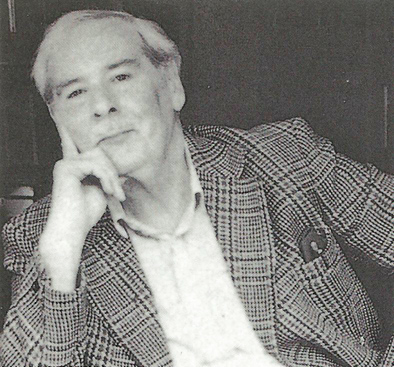
Of course, I was talking of the days – over twenty years ago – at the very start of the 1990s when meetings, usually over an affable pub lunch, consisted of Alan Hunter, myself and Caroline Graham, the late Nancy Livingston and her husband David and Guardian critic the late Matt Coady. To be honest, the last luncheon I attended was probably in 1991 or 1992 and I assumed the chapter was …well, closed.

Quite by chance I have recently discovered that not only was there an anthology of short stories by East Anglian crime writers called Anglian Blood, published in 1995, but that the organisation still exists, at least in spirit, as a meeting took place on 23rd July ‘between 11.30 a.m. and 3 p.m.’
For legal reasons, the location of the meeting was kept confidential, but I approve of the timings advertised and I know that Alan Hunter would have regarded them as perfectly adequate for an affable pub lunch.
Portrait of the Artist as a Thriller Writer
As series editor I am currently busy working on this Autumn’s titles for the Top Notch Thriller imprint, which is dedicated to reviving Great British thrillers, but one title has put me in a quandary – a very pleasant one – or rather the author has. When we re-publish his 1971 thriller Somewhere in England, do I describe my good chum Reg Gadney as the distinguished artist who also writes excellent thrillers, or as the thriller-writer who is also a top notch portrait painter?
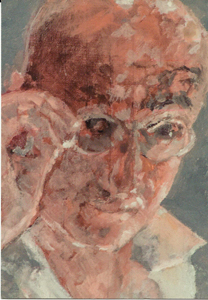 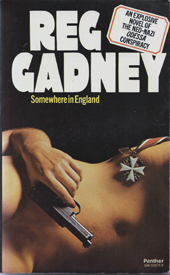
At least I will have no difficulty finding an author photograph to accompany the TNT edition of Somewhere in England. Even better, I can find several stylish pictures of Reg as self-portraits by the artist. Indeed ‘Portraits’ was the title and theme of Reg’s latest one-man exhibition at The Friary in London this summer and the Dowager Lady Ripster and I were honoured to be invited to the champagne-fuelled opening in the faint hope of being asked to sit for a portrait even if that would bring down the tone given the gallery of famous faces on show. (Coverage of Reg’s Portraits 2014 exhibition can be found on-line.)
Somewhere in England, first published in 1971 (a year before The Odessa File) is a fast-moving thriller involving the hunt for a Nazi war criminal who has escaped justice via the ODESSA network and is thought to have found sanctuary in England. Caught up in the hunt for (or protection of?) the Nazi known as ‘G’ is solitary researcher into old Nazi propaganda films David Peto, who soon finds himself well out of his depth as the action moves explosively (literally) from the misty Suffolk coast to a tense burglary of the Imperial War Museum.
As well as having distinguished careers as a painter, a lecturer and thriller writer – possibly best known for his Alan Rosslyn series – Reg has also written non-fiction works on John Constable and President Kennedy and for television, including his award-winning adaptation of Minette Walters’ The Sculptress in 1996.
Saintly Work
I was on the point (honestly) of writing to thank Ian Dickerson, all-round expert of ‘The Saint’ and editor of the latest reissues of the whole Saintly canon, to thank him for sending me the new American edition of The Saint in Europe (published by Thomas & Mercer), when I came across a photograph of him in very distinguished company.
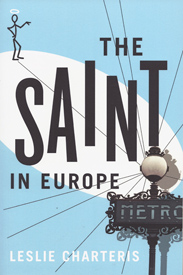
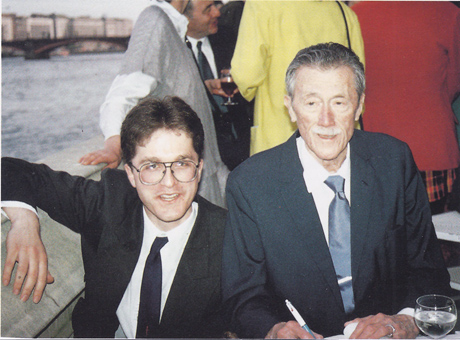
Ian is pictured with theSaint’s creator Leslie Charteris and I think the occasion was the reception at the House of Lords at which Leslie was awarded the CWA’s Diamond Dagger in 1992. The eagle-eyed crime fiction fans may just be able to pick out the smiling figure of Colin Dexter behind Ian and Leslie. Is this perhapsan early example of ‘photo-bombing’?
Film News
I have received a letter from a loyal fan in North Wales bemoaning the fact that mentions of that distinguished bookseller Ralph Spurrier (a.k.a. The Postmortem Man) in this column have been scant of late.
The reason, I can now reveal, is that Ralph has been very busy shooting second-unit action scenes for the next James Bond film, details of which are naturally a closely guarded secret; although I can reveal that some scenes take place on a luxury cruise of Scandinavian fjords, icebergs and whaling factories.
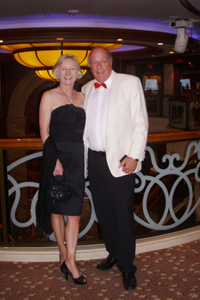
I have no idea what the next Bond film is to be titled, but I may saunter down to William Hill’s emporium to put five shillings each way on it being The Postmortem Man. But first, I should perhaps consult the website http://www.postmortembooks.com/ to see if offers any clues….
Pip! Pip!
The Ripster
|